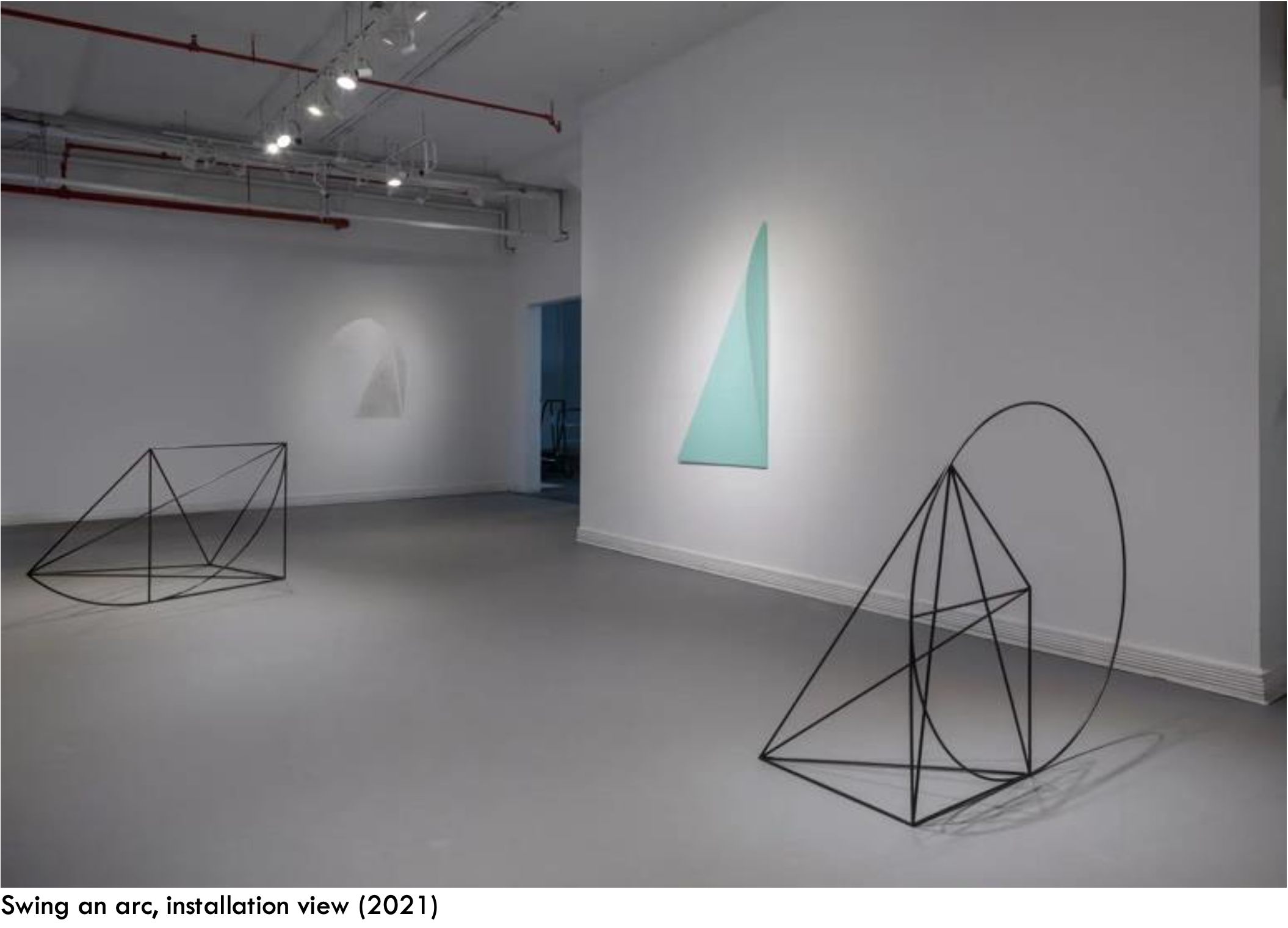A.V., Soft architecture
by Nicholas Cueva: High Art on Substack (January 19, 2024)
I had the wonderful experience of working with A.V. years ago at Five Myles. She was having a show, and the lovely Hanne Tierney recommended me for art handling.
I was unfamiliar with A.V.’s work at the time, and part of art handling is learning about materials and construction, so things can be safely moved. A.V.’s materials are always central to the forms and occupy an interesting territory of spatial construction. They are modernist in this respect. Minimal.
Balance is a big part of all her work.
For this show, A.V. had made this massive steel table with well-proportioned features, simple and modern. This was the hardest thing to move, its weight absurd. But it wasn’t alone: the table acted as plinth for the “form.” At the time, AV’s work centered around a specific type of form. Soft-looking, smooth objects. For the table there was a lively but wilting piece in a modeled tan.
Paper shroud for unmournable bodies, after Teju Cole (2015)
The material almost like leather, commands the table, like a body would. Titled “paper shroud for unmournable bodies, after Teju Cole,” the hint of a body becomes more acute. Like Michaelangelo’s sly self- portrait as Saint Bartholomew in the Last Judgment, the form drapes.
It is almost an homage to Marat in the painting by David, which is fitting. Julian Assange in repose.
AV always presents a tasteful balance, regardless of materials. In these forms, they feel like clothing, or bodies. Something inbetween? The title’s reference is the New Yorker essay, “Unmournable Bodies,” a partial response to Charlie Hebdo, Assange, Snowden, Chelsea Manning, and a call to be wary of our own sins in the West. Plus ça change, plus c’est la même chose.
These forms all look somewhat like bodies. Flaccid or erect (there is some play), and only when you realize that, at their core, there is a rubber tube, an inner tube, does a clarity of material come into focus. An industry of rubber, subsumed within white modern art formations. Reference to the petrodollar? Colonial whitewashing? American legacy?
Odalisque (2018)
The wall work hangs like a ghost, ominous, heavy. Their softness like billowing drape, warmed by sunlight, their form rigid like marble, cold like a mausoleum. There is an ecstatic buzz to the work. Spiritual energy, created between a confusion of the mental model and the actual material.
flowing, flown (2018) sable venus (2019)
The forms aren’t idealized, but they aren’t actual either. Real folds and weight, seemingly petrified in place. Not without arrangement, but intended to be somewhat haphazard: natural, relaxed.
The rigor mortis of a snake skin, the silkie hide on the sand, the confession of a life and a promise of new beginnings.
white cube (Cartesian meditation (2019) gravitas I (2015-7)
Like a shirt barely in the hamper, a testimony to an active moment, recent history cast in plaster. Time isn’t moving, but it was until just a second ago.
They are sensual. Like a cat, I feel I want to run my finger over them. They are inviting. Handsome in the original meaning.
Solemn, in their stone-like stillness.
Definitely meditative.
Much like lips blowing cold air, or an open mouth blowing hot, these forms provide a shifting temperature, a reflection of the state of the viewer and surrounding light.
We can see AV expanding on ideas, as the loop of the tube, the ring form becomes explored in different media.
In her ‘How to Build a Temple’ series, that circular form becomes architectural, each allowing the viewer to occupy different aspects.
How to build a temple: Vesta (2013 – 2015) How to build a temple: Sol (2019)
In Vesta, the oculus in the roof into the earth, allowing us to see into the sky as we would the hole. A harmony balanced in space. At night the work allows for the cold warmth of the swirling stars to touch the earth a little deeper. As above, so below.
In Sol, we are allowed to actually enter the form. Though it is in three parts, it is “ring,” the pattern in the parts and the consistency of its assembly implies a wholeness.
One may easily imagine a ring placed on top and it would be fully supported by each part. It is the absence, the implied form, a technique artists use to prompt the pattern recognition architecture of the human mind to provide form its attraction. A space requiring imagination.
The form is almost interior scaffolding for some ring-like movie prop. I put Sol in a show in 2020, and observing how people interacted with it, you notice most people become more intimate and reserved inside the form. Couples huddle closer. Voices soften. Most become restricted when they walk inside, almost as if they were in a small room: afraid to touch the walls.
I want to see more artists insisting on space. It’s amazing how small moments like that can shift perception.
I had lunch with my former advisor Jo Hormuth about a year ago, like AV, another maven of specificity. She was talking about how she thought architectural follies would come back. I’ve been excited since, imagining and sketching some ideas. How fun. And now reflecting, I see these temples being in that vein. Utilitarian as they may be.
In more recent work by AV, the ring continues, but some of that folded energy from her ‘gravitas’ series returns, creating starbursts of complexity in the metal forms, and a crystalized perfection in the wall works.
Swing an arc, installation view (2021)
Exact. Distilled. Authoritative.







